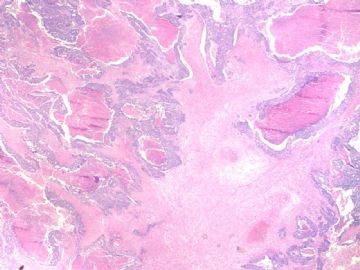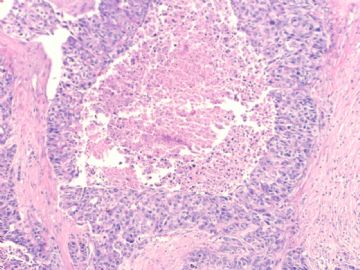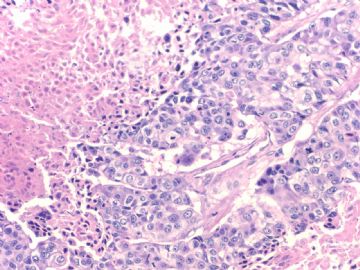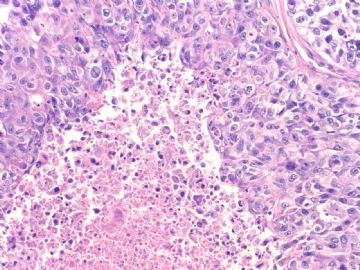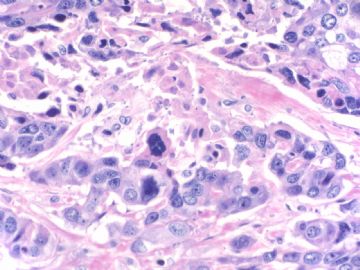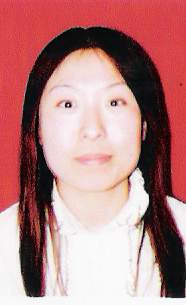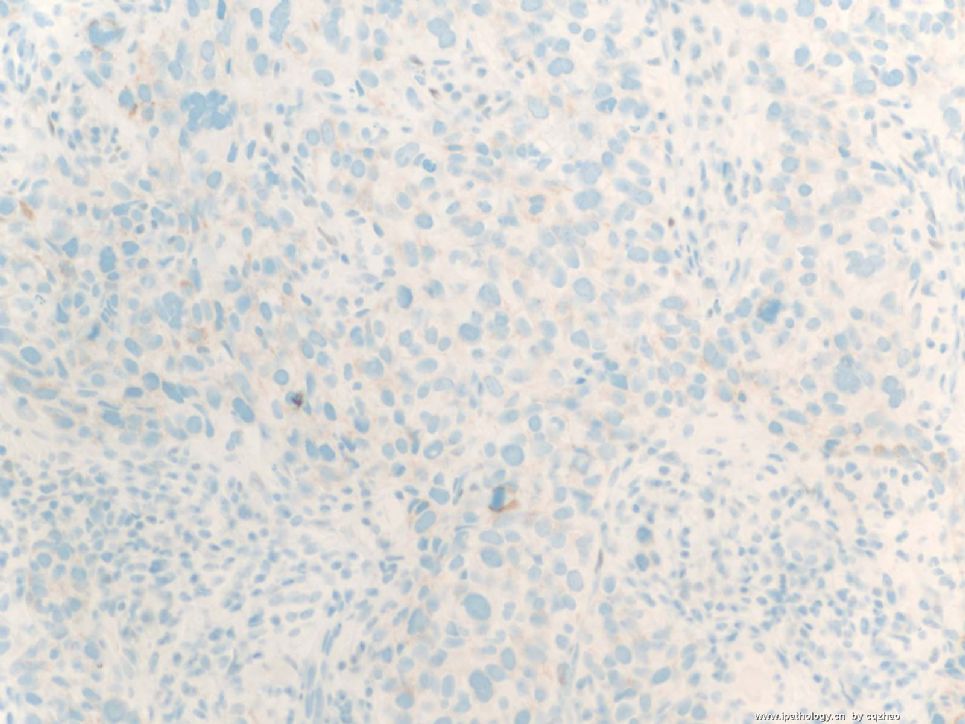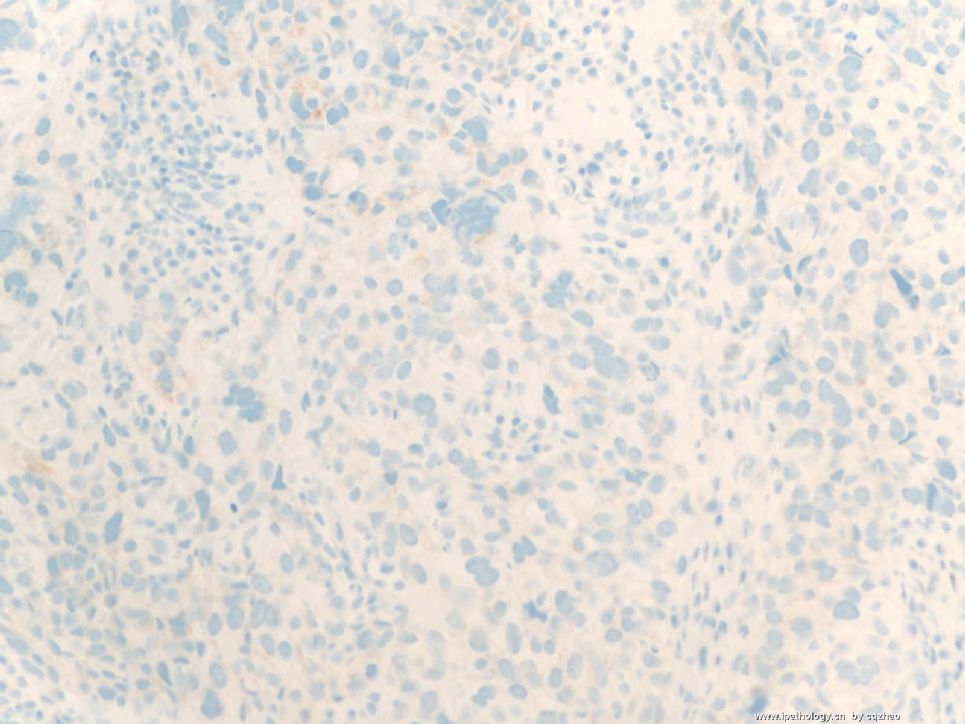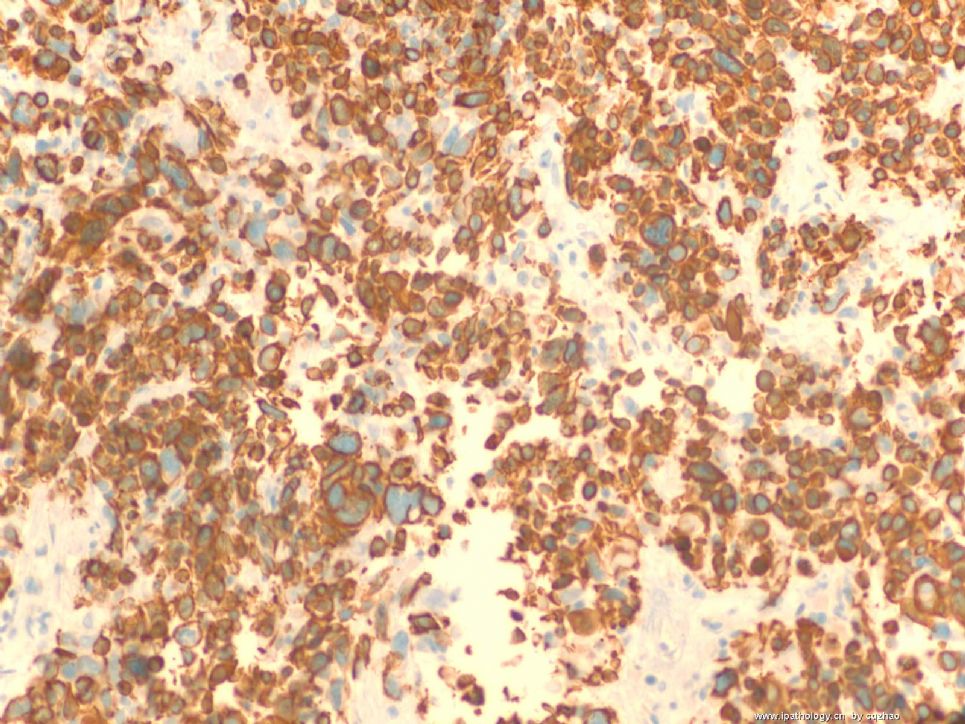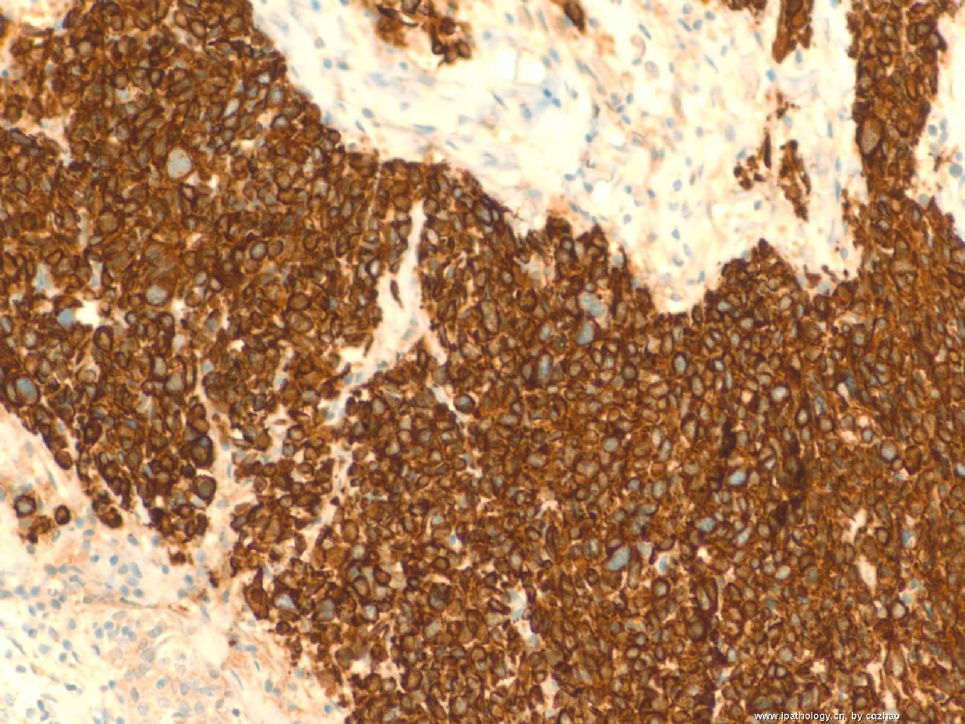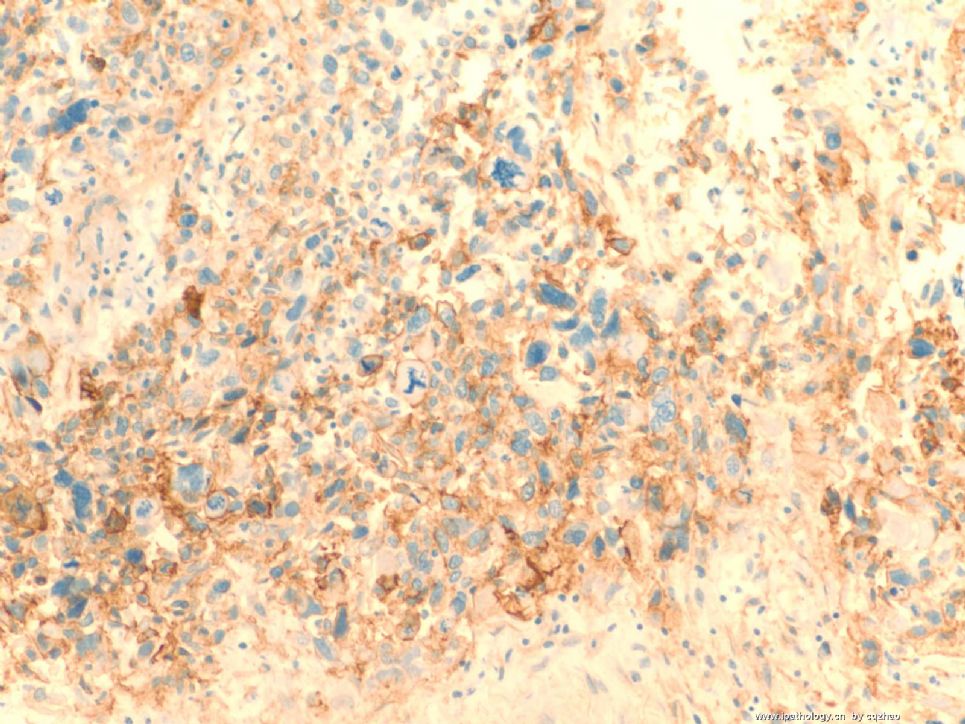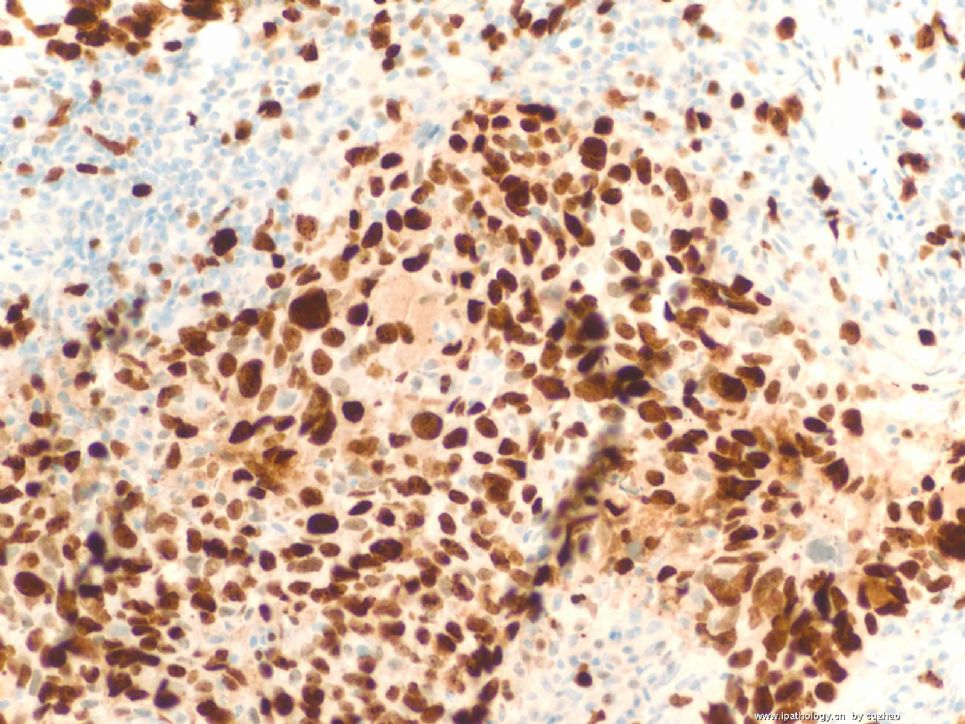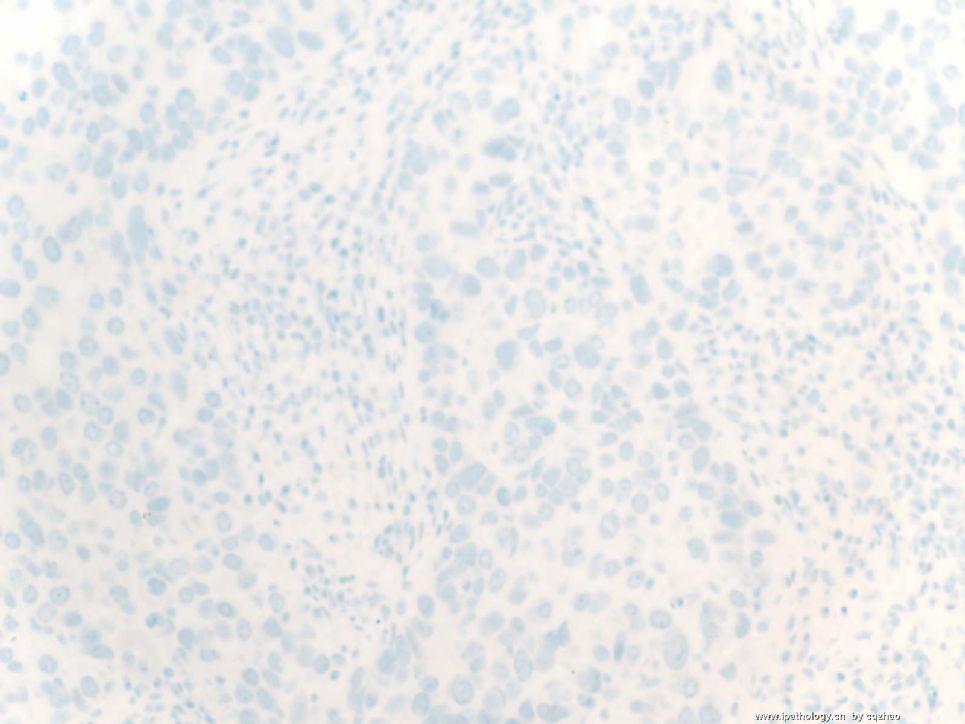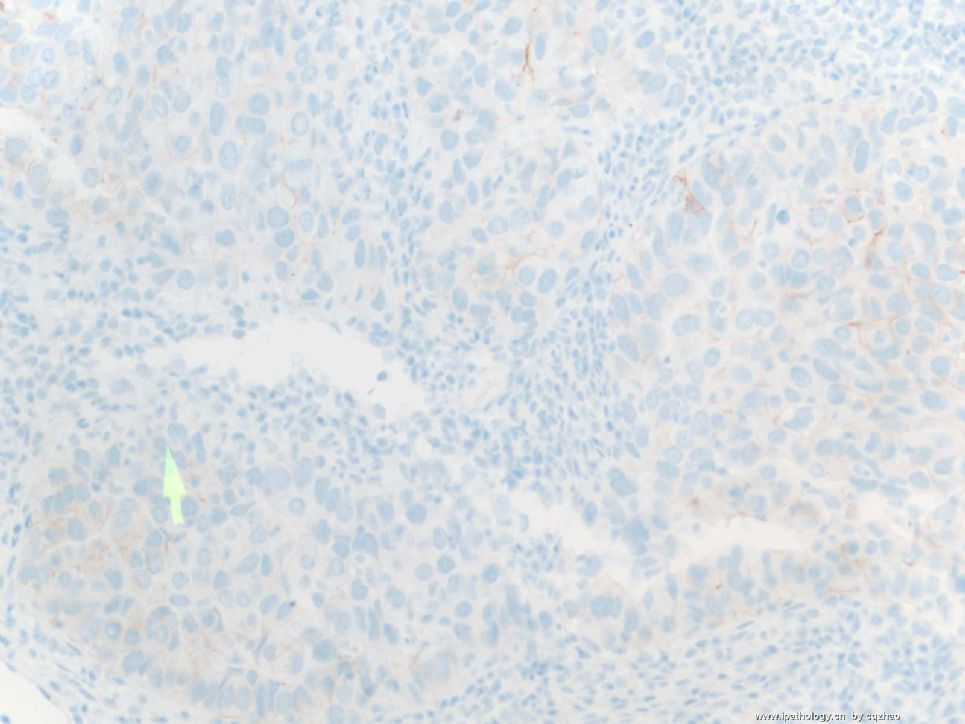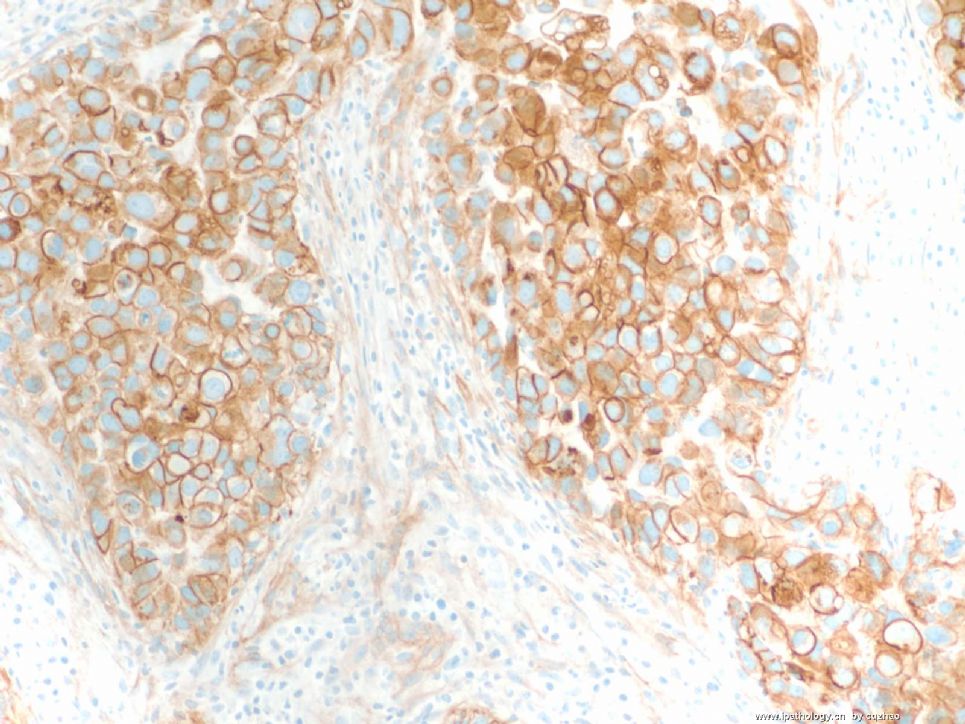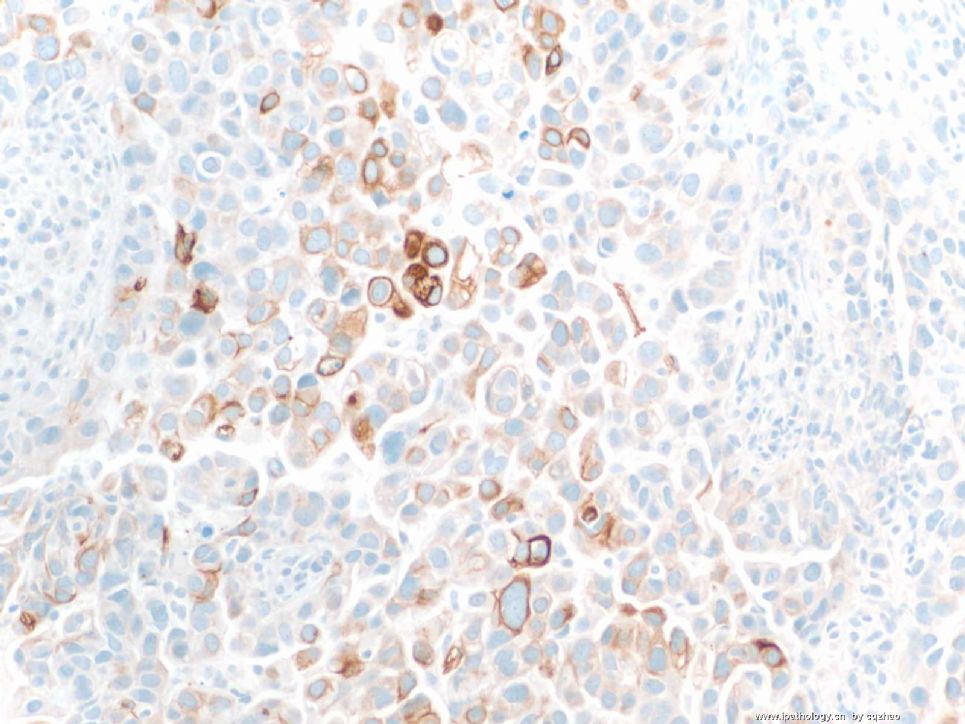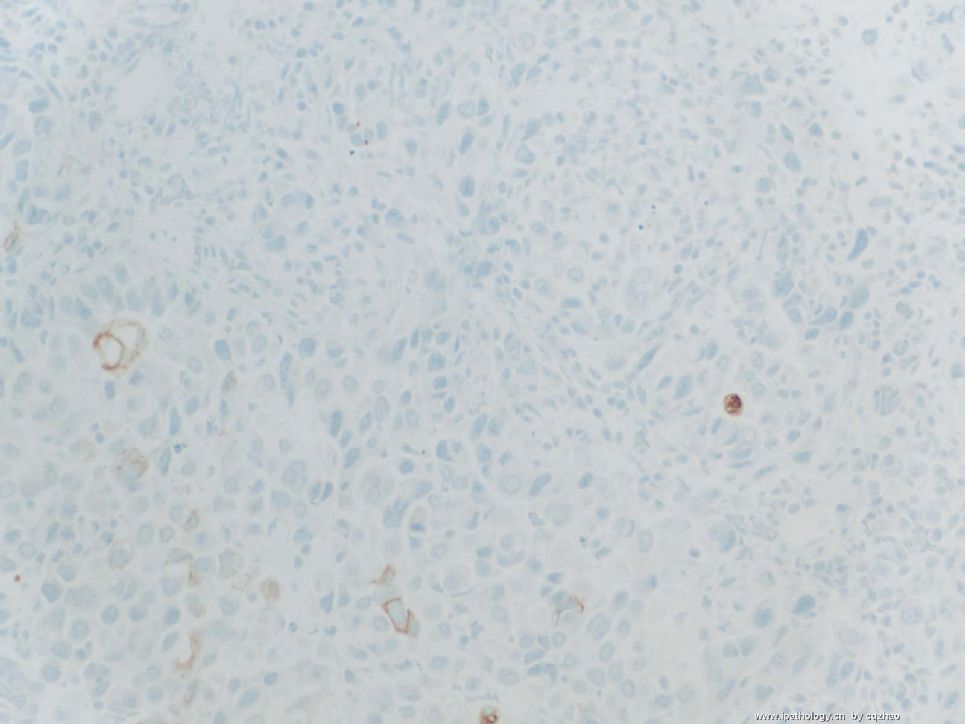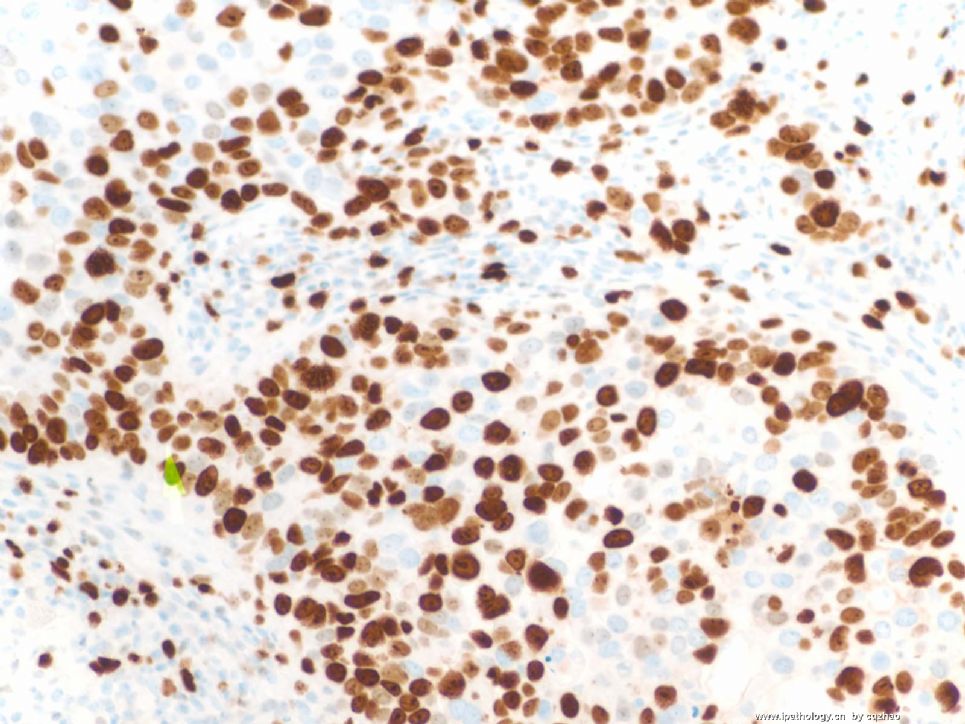| 图片: | |
|---|---|
| 名称: | |
| 描述: | |
- B20Breast basal-like carcinoma (cqz 6)
-
本帖最后由 于 2009-02-03 21:30:00 编辑
| 以下是引用kint123在2009-2-2 7:38:00的发言:
非常感谢赵教授,我还有两个问题: 1、对于正常乳腺型,在免疫组化检查中,有什么特殊的吗?与Null型(negative for all the markers)有多少关系? 2、曾有人将腺腔型分为三个亚型,对于其中的C型,并没有仔细的阐述,只是提到在6种分型中,预后最差,这个C型又怎么诊断? 这些问题在看文献时都找不到明显答案,还请赐教,谢谢 |
Just call me Dr. Zhao or Zhao.
You may know more than I know in this topic.
One thing should keep in mind. There are two different classifications, gene profile and IHC. Recent studies stated that 正常乳腺型 is not present.
2. The 2000 paper mentioned 3 luminal types, A, B, C. The same group of researchers had another paper in 2003 mentioned the luminal C may not be present. Until you are doing the study in gene profile, the gene profile classification is not very useful in clinic now. We only use the term basal-like ca. If cases with triple negative and some basal markers positive, we diagnose invasive ductal carcinoma with basal-like phenotype. The clinical treatment is the same for the cases with or without basal-like pheonotype. The oncologists care the results of ER, PR, her2/neu.
Now a california company, Genomic Health can use tissue block to do RT-PCR for expression of 21 genes (including er. pr, her2), called Onco type DX.
Oncotype DX analyzes a panel of 21 genes within a tumor to determine a Recurrence Score. The Recurrence Score is a number between 0 and 100 that corresponds to a specific likelihood of breast cancer recurrence within 10 years of the initial diagnosis. With this information, it may be possible for doctors and patients to make more informed decisions about breast cancer treatment options.
A lot of breast oncologists like the methods. In fact it is not better than simple ER/PR/Her2 IHC. One test needs more than 2000 dollors. The company earns a lot of money. Now few people care the cost of treatment.
From your questions I can tell you read a lot of papers already. I am trying to answer your quesions by my impression. I never did research on this topic. So they can be wrong.
1. There are four possibilities: ER+/PR+, ER+/PR-, ER-/PR-, ER-/PR+. The cases with ER-/PR+ are rare, but they can be present. We use triple negative.
2. Generally we use 4 markers (ck14, ck17, ck5 or ck5/ck6, EGFR). I did not meet the cases with positivity <10% for all four markers. Generally some markers may be more stronger or intensity stains than others.
3. EGFR is not specific and is positive for many tumors. Clinically anti-EGFR drugs can be used to treat the cancers with positive EGFR, for example lung carcinoma..In my impression EGFR often is weak staining or negative for basal-like breast carcinoma. People use this marker for basal-like ca becasue it was used in the begining study. If the cases with only EGFR positive and all other basal-like markers negative, I do not think they are basal-like ca.
just for your reference.
对于这一肿瘤,我看了不少文献,有一些疑问请教一下:
1、二联阴性与三联阴性的标准:在实际的应用中,我们应采用哪一个?毕竟,有人做了近6000例的检测,结果认为,没有PR阳性而ER阴性者;我用后一种
2、基底/肌上皮标记物的阳性标准:有人采用“任何强度阳性”即为阳性,而有人采用>10%瘤细胞阳性,我也用后一种
3、对于基底细胞样癌的诊断,EGFR在单独阳性时(二联或三联阴性时),可以诊断吗?EGFR虽然在BLBC中表达率较高,但并不特异,且也不是基底/肌上皮标记物,以之作为诊断标准之一,是否牵强?
不知道老师是否有空指教,谢谢!

- The More We See, The Less We Know!
-
本帖最后由 于 2009-01-11 23:01:00 编辑
Ok, every one, totally I sent here 6 basal-like ca here with three cases showing the IHC panel we used. Also I briefly discussed characteristics of this cancer.
You should learn from 天山望月 to summary some main cytomorphologic and IHC featrures by yourself. Generally breast pathologists will know the case may be a basal-lik ca by H&E. Hope you know it also. Variations occure always. My friend's study indicated that CK5 is most sensitive marker. However Ck5 essentially is negative for above case 1. We always should order few markers, but not one only. Ki67 is not cecessary for dx. But you can see most of the cases showed very high proliferative index.
I will enclose this topic here.
Thank you all for reviwing the this topic, especially for some ones who joined the discussion.
